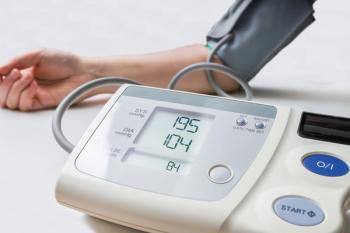
Research notes racial differences in recommended cancer screenings
Black and Hispanic women are significantly less likely to have up-to-date colon cancer screening compared to White women.
A cross-sectional survey presented at the annual meeting of the North American Menopause Society (NAMS) has concluded that Black and Hispanic women are significantly less likely to have up-to-date colon cancer screening compared to White women.
However, White women were much less likely to have up-to-date mammograms versus Black women.
“There has been increasing interest in health disparities in the last few years,” said Holly Thomas, MD, an assistant professor of medicine and clinical & translational science at the University of Pittsburgh in Pennsylvania, who performed the data analysis and wrote the abstract. “I wanted to investigate the relationship between race and cancer screening, while still considering other factors that may influence cancer screening.”
The study consisted of 866 women from selected underserved areas of Chicago who were interviewed by the Sinai Community Health Survey study team in 2015 and 2016.
The mean age of participants was 43.5 years, of whom 12% were White, 36% were Black, 49% were Hispanic, and 3% were other races/ethnicities.
Overall, 60% of responders had total household income under the poverty level and 54% had a high school education or less.
Colon cancer screening up-to-date was defined as those over 50 who had a colonoscopy within 10 years, sigmoidoscopy within 5 years or stool testing within 3 years, whereas up-to-date mammogram was within 2 years among those aged 50 to 75, and up-to-date pap smear within 5 years among those aged 21 to 65.
Only 58% of the designated age group had colon cancer screening up-to-date, with Black, Hispanic and women of other races much less likely to have up-to-date screening compared to White women: odds ratio (OR) 0.61, 0.38 and 0.65, respectively (P =.049).
Three other factors linked to up-to-date colon cancer screening in multivariable analyses were no physical disability (OR 3.22) (P =.010); a diabetes diagnosis (OR 3.10) (P =.002); and higher trust in their healthcare practitioner (OR 2.24) (P =.029).
“The rates of colon cancer screening are still quite low,” Thomas told Contemporary OB/GYN®. “In our sample, only a little over half of women had up-to-date colon cancer screening. In addition, we saw that women from racial and ethnic minority groups were less likely to have up-to-date colon cancer screening. However, when we accounted for other factors that may influence cancer screening, such as insurance status, there were not differences between women from different racial groups.”
A full 80% of age-defined women had received a mammogram within the past 2 years. But Black women in this sample were nearly five times as likely to have received a mammogram compared to White women (P =.010).
Similarly, 83% of age-defined women had cervical cancer screening in the last 5 years; however, there were no differences by race (P =.791).
Thomas said when contemplating disparities in cancer screening, “racial disparities are important, but other factors can influence these disparities as well. For instance, women who had physical disabilities or who had experienced discrimination in the health care setting were much less likely to be screened.”
To lessen racial differences in cancer screenings, health care providers can ensure they are having open, honest conversations with all their patients about cancer screening that respect patient's culture and values, according to Thomas. “Health systems can also create screening programs that make it easy and convenient for patients from all backgrounds to participate in screening.”
In addition, policymakers can ensure “that more individuals have health insurance and that health insurance companies pay for cancer screening without any cost to the patient,” Thomas said.
__
Disclosures
Thomas reports no relevant financial disclosures.
Reference
Thomas, H. Racial differences in cancer screenings. The North American Menopause Society Annual Meeting. September 23, 2021.
Newsletter
Get the latest clinical updates, case studies, and expert commentary in obstetric and gynecologic care. Sign up now to stay informed.











